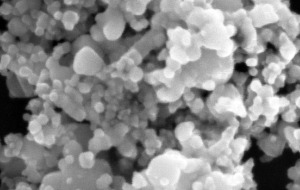02
Feb
New Jersey Bill Prohibits Pesticides on School Lawns
(Beyond Pesticides, February 2, 2011) A bill that would make the state of New Jersey a national leader in banning pesticides on all school grounds was passed in a Senate environment committee Monday with unanimous bi-partisan support. The measure, dubbed The Child Safe Playing Field Act, would prohibit the use of most lawn pesticides on public and private school playgrounds, recreational fields, and day-care centers.
Legislators voted (unanimous bi-partisan support 5-0) to release The Child Safe Playing Field Act, S.2610 at a NJ Senate Environment Committee hearing. The bill would prohibit lawn pesticide use on all day care, school, municipal, county and state playgrounds and playing fields. Low-impact organic pesticide applications would be allowed, and there is an exception that allows stronger pesticides during emergencies.
If New Jersey’s proposal were to become law, all but a small class of lawn pesticides would be banned from public and private school grounds, including high schools; recreation fields owned by municipalities, counties, or the state. Pesticides would only be allowed in emergencies to eliminate “an immediate threat to human health.”
“This legislation is important to protect children’s health where they play. At least 40 towns and many schools have declared their parks pesticide free, now it’s time to make all playgrounds and playing fields pesticide-free.” Jane Nogaki, Vice Chair, NJ Environmental Federation.
The proposal would be the most far-reaching in the nation. A similar law in New York state covers just school grounds where students are in kindergarten through 12th grade, while Connecticut’s version is limited to K-8 schools. Only Canada has a more extensive prohibition: No cosmetic pesticide use is allowed, said John Boechner of the New Jersey Green Industry Council, which represents the lawn-care and pest-management industries and opposes the measure.
The New Jersey bill expands a 2002 law requiring schools to develop Integrated Pest Management plans that combine pest control, building maintenance, and sanitation practices. That law encourages the use of low-impact pesticides and requires notification before applications.
Jeff Tittel of the New Jersey Sierra Club, who testified in support of the bill, said the new proposal strengthens the existing law, which was groundbreaking at the time. “Children are our most vulnerable population as far as pesticides go,” Mr. Tittel said. “Our first goal should be ‘do no harm,’ and this bill does that.”
New Hampshire and Maine have introduced similar legislation.Training programs are in place to educate grounds maintenance people on the basics of sound turf management – building healthy soil, planting appropriate grass seed, using compost or aeration to reduce compaction.
This state bill would support over 30 communities in New Jersey that have already made their parks pesticide-free zones and have adopted an Integrated Pest Management (IPM) program for managing town property by passing a resolution adopting a pesticide reduction policy including Burlington and Cape May Counties, and the townships of Bernards, Chatham, Cherry Hill, Collingswood, Asbury Park, East and West Windsor, Hightstown, Montclair, Ocean City, Dennis, Colts Neck, Hazlet, Neptune, Red Bank, Pine Beach and Wall Townships.
Many scientific studies indicate that pesticides threaten the public’s health by increasing the risk of cancer, learning disabilities, asthma, birth defects, and reproductive problems. These chemicals can also poison animals, pollute local streams and rivers and seep through the ground into underground aquifers. Every body of water tested in New Jersey has evidence of pesticide contamination, according to a study by the U.S. Geological Survey. Children are especially sensitive and vulnerable because of their rapid development and behavior patterns. Currently New Jersey uses about four million pounds of pesticides annually for lawn care, mosquito control, agricultural production, and golf course maintenance.
For more information on non-toxic lawn care and “Pesticide Free Zone” ladybug logo yard signs see NJEF’s Pesticide Campaign and Beyond Pesticides’ Lawn Care Program webpages.
Source:
NJ Environmental Federation


















